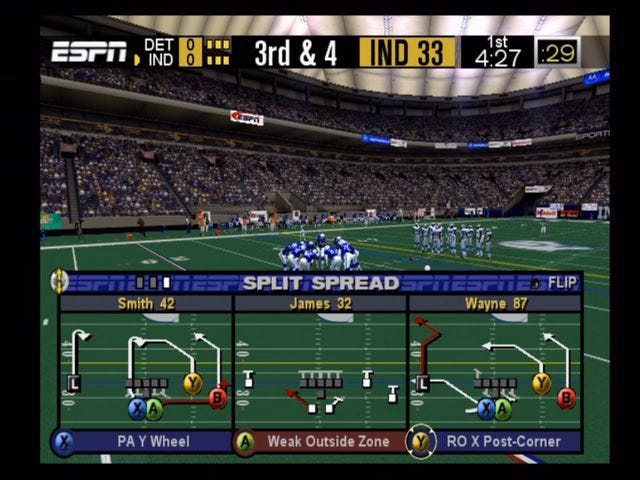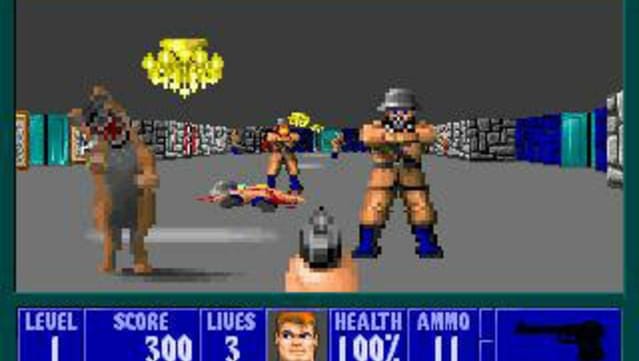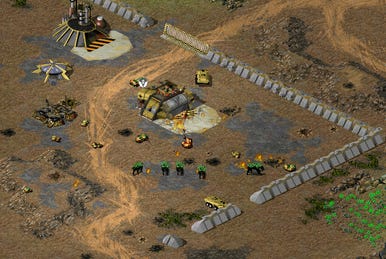Video Games and How they have Shaped the Gen X and Millennial view of reality.
As a #Childofthe80s, I have fond memories of all the 486 era video games I played as a kid - Sid Meier’s Civilization (the original!), Wolfenstein 3D, Doom, Mechwarrior, Starcraft and of course, Command & Conquer. I was such a nerd I even took a course in college on the history of computer game design at Stanford and wrote a term paper on Civilization and it’s evolution.
The VGA era - I remember it fondly - back when NVIDIA built shitty video cards for us to play first person shooter games instead of GPUs that fly real First Person View drones on the battlefield.
What’s been interesting is to see how these wargames have shaped our generation’s perception of warfare. Most of these action and strategy games fell into one of two categories: First Person Shooter (FPS) or Real Time Strategy (RTS).
Wolfenstein 3D, Doom, Mechwarrior, Flight Simulators and later games like Call of Duty and Halo firmly fell into the FPS category. These games are firmly in the 1v1 category. On the other hand, RTS games like Command & Conquer and Starcraft (Zerg!) introduced us to the concept of 1 v Many - the ability to draw a lasso around many assets on the gameboard and give high level orders to the group which they would then use to move, regroup or attack an enemy cooperatively.
While FPV has moved from video game war to the real battlefield and become the cornerstone technology of the Ukrainian air war in much the same way the Surface to Air Missile defined Vietnam or the Jet Fighter defined the Korean war, RTS has yet to really make the leap and true 1 v many drone swarms have yet to really reach the battlefield.
In this piece I will outline the current state of the art in swarm technologies, outlining both the AI/software challenges as well as the logistics challenges and how they are starting to show up on the battlefield.
The dual use case of drone shows
Drone shows have quickly become a popular alternative to fireworks shows at the holidays, especially in places with access to lots of cheap drones like China. Check out this Guinness World Record show in China with 8000 drones at once!
Tools like route planning and waypoint modes (where a drone flies out to a specific point in space and stays there) have become table stakes for virtually all off the shelf drones at this point, starting all the way back at DJI Phantom 4 (or maybe even earlier) in 2016/2017. Commercially available software like that made by Drone Show Technologies allow these to be programmed and controlled.
These drone shows are not without significant limitations, however. They are completely dependent on command and control, GPS and have little or no ability to be dynamically tuned on the fly. If they lose datalink or GPS, the consequences can be utterly disastrous, as this failure in Orlando (which sent an innocent bystander to the ICU when a drone fell on him) shows quite dramatically:
Logistically these swarms are a headache too: with lots of labor required to stage the drones prior to flight, charge their batteries and maintain them. It’s best to think of these systems as the alpha version of where this technology will eventually go.
Moving from drone shows to true swarms
For drone swarms to really reach their full potential, a few technologies have to be integrated into the product that are at various stages of maturity:
Real time command & control at scale
Control Abstraction Layer (going from high level commands to complex maneuvers)
Intra-drone communication and coordination
Robust local precision navigation and timing (independent of GPS at least intermittently)
Tendering: how are these drones deployed, recharged and resupplied at scale
There are probably a few other technologies that should be added to this list I haven’t even thought of. For instance, when pilots transitioned during World War I from shooting pistols and shotguns at each other to mounting machine guns in line with the pilot, a synchronization gear had to be invented and integrated so you wouldn’t shoot your own propeller off!
Each of the bullets above could easily take up a whole substack (or indeed an entire book) by themselves, so let me start by unpacking the first two: real time command & control and abstraction - I’ll leave the others for future posts.
Real time command & control at scale
Drone shows are pre-programmed with minimal ability to change them on the fly. Step one is to make this dynamic and get the drones to run pre-programmed routes from a set playbook the user can select from. The best analogy I can think of to this is actually from another video game I played in college: Madden NFL 2k3.

Going to canned plays (Courses-of-Action or COAs to use the preferred military nomenclature) has the advantage of minimizing the cognitive load on the user and also the communications load on the network. It’s also significantly more complex architecturally. In addition to precise knowledge of every drone’s position, speed and heading, for precision maneuvering the drones (or the controller) may need collision avoidance sensors and software to avoid running into each other.
Depending on the architecture, this may still require a good datalink to manage a substantial amount of centralized command and control and precision PNT. In non-permissive environments this may not be a foregone conclusion- due to ubiquitous Counter UAS and GPS/Counter-PNT jammers comprising the so-called disconnected, denied, intermittent and/or with limited bandwidth (DDIL) environment.
Abstraction
One benefit of this kind of abstraction is that, much like the offensive line in Madden shown above, the drones can be pre-loaded with a set of ready to execute COAs. A simple command could be uplinked to each drone “Hail Mary” or “Quarterback Sneak”.
Many 20th century weapons datalinks, like Paveway, AMRAAM and Patriot, had bandwidth limited at rates that made a 2800 Baud modem (remember those?) seem luxurious. They use semaphores and similar techniques to manage things like dynamic retargeting and target cue updates. Drones could follow a similar approach at scale. Indeed systems like Group III and above UAS have been doing this using protocols like STANAG 4586 to this for a while now.

So sacrificing precision may be a makeshift solution here and using design patterns that have worked successfully for sensors trying to make sense on the battlefield from a common operating picture with limited bandwidth makes a lot of sense to apply to the drone problem.
Pre-loading some of the COAs into the drones in the swarm will allow you to get away with more limited command bandwidth and intermittency (as little as a single command may suffice) for things like simple formations and regrouping. Unless these COAs are themselves “waypointed” (that is hinged at certain static decision points in time and/or space) using robust mission planning and keep out lanes, the amount of “smarts” the individual drones need to have for terrain following/terrain avoidance, collision avoidance with other drones and increases dramatically.
Products working towards the solution
At CX2, we are spending a lot of time thinking about how we can do this at scale for an “electronic wall” in the spectrum - allowing multiple drones to scoop up signals on the battlefield, identify and fix on them and if necessary destroy them- all in the DDIL environment. Coordinating all these systems for precision fires and dynamic tasking as assets come on and offline is indeed a key part of our Nexxus operating system, shown in the graphic below.

But we are not alone amongst US contractors in thinking about this problem. Gambit, a DC based defense start up, has been looking into how to integrate multiple drones to generate what they describe as “tasking outcomes”. Overland AI, an autonomous ground vehicle company, has also rolled out its Overwatch platform that similarly does routing and dynamically planning for vehicles that have the smarts to avoid colliding with each other. So does Shield AI Commander and Anduril’s Lattice for Mission Autonomy
What Next?
Next post I will go more into depth on intra-drone coordination and maneuvering, focusing on AI terminal guidance systems. I’ll also talk about GPS denied navigation and what makes it hard, as well as get into some of the drone tendering systems that we are starting to see entering the battlefield and the commercial market as well.





Like so much tech these drone displays are conceptually very cool. But you make a good point that this obscures the more prosaic reality that it is fragile tech. If, as you claim, the tech matures and becomes easier to use, that has a lot of interesting implications from entertainment to advertising to search and rescue to defense…